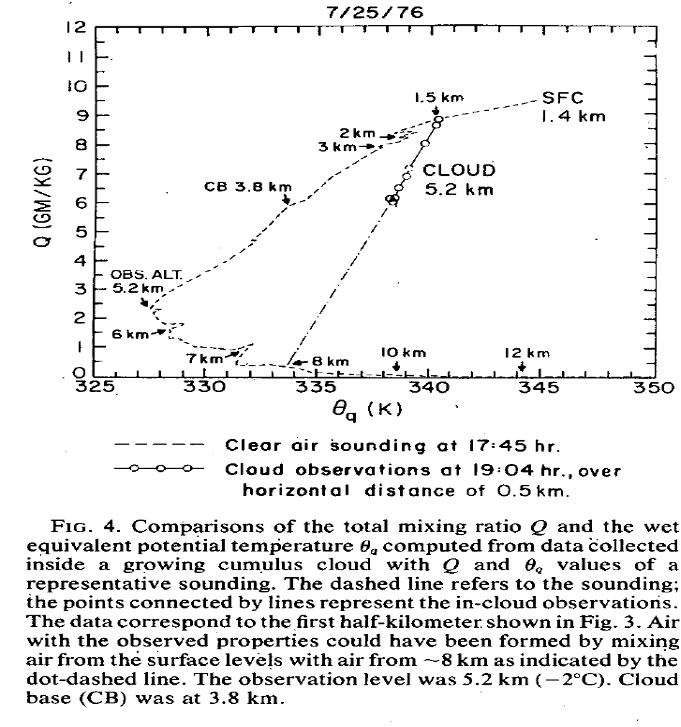Another important discovery from the sailplane observations, that countered existing consensus of mixing in growing cumulus congestus clouds, was that mixing of dry air into the top portion of cloud resulted in penetrative downdrafts. Mixing of dry air into the cloud containing droplets causes evaporation and cooling of the mixed air parcels resulting in loss of buoyancy. These cooler air parcels can descend even in weaker updrafts. This was an important result from the work of Ilga Paluch who used sailplane data to demonstrate the existence of penetrative downdrafts in the clouds of NE Colorado. Using the observations of liquid water content and temperature from the sailplane Paluch calculated two parameters that are conservative during mixing: the total water substance (liquid water plus water vapor contained in the air), Q, and the wet equivalent potential temperature, Qq. Qq is similar to Qe, the pseudo adiabatic potential temperature, except that it is conservative along the reversible adiabat rather than the pseudo-adiabat. See Paluch, 1979 for further understanding.
Figure 22. A reproduction of the original Fig. 4 from Paluch (1979) publication.
An example of a Q, Qq analysis from Paluch (1979) is shown in Fig. 22. In this example the sailplane observations at 5.2 km are shown to be the result of mixing between parcels of air earlier residing near 8 km and air below cloud base from 1.5 km. Paluch’s results show that the mixing of dry air near the cloud top causes sufficient evaporative cooling to create downdrafts that can penetrate several kilometers down into the cloud. Prior to this finding growing cumulus clouds were thought to entrain dry air into the sides of the cloud. Still today lateral entrainment into clouds is employed in many cloud models.
- Explorer Participation in the National Hail Research Experiment (NHRE)
- Precipitation Formation via the Ice Process in NE Colorado
- The Discovery by Explorer of Adiabatic Ascent in Clouds of the High Plains
- Discovery of Penetrative Downdrafts
- Observation of a Counter Rotating Vortex Pair in a Cumulonimbus
- Explorer Observations of Silver Iodide Seeding in Cumulus Clouds
- Studies of Initial Cloud Electrification with Explorer
- Electrical/Microphysical Measurements in New Mexico
- Measurements on Explorer of Particle Charge, Size and Shape
- Flight in New Mexico to 40,200 ft with Particle Image and Charge Measurements
- Results from CaPE in Florida in 1991
